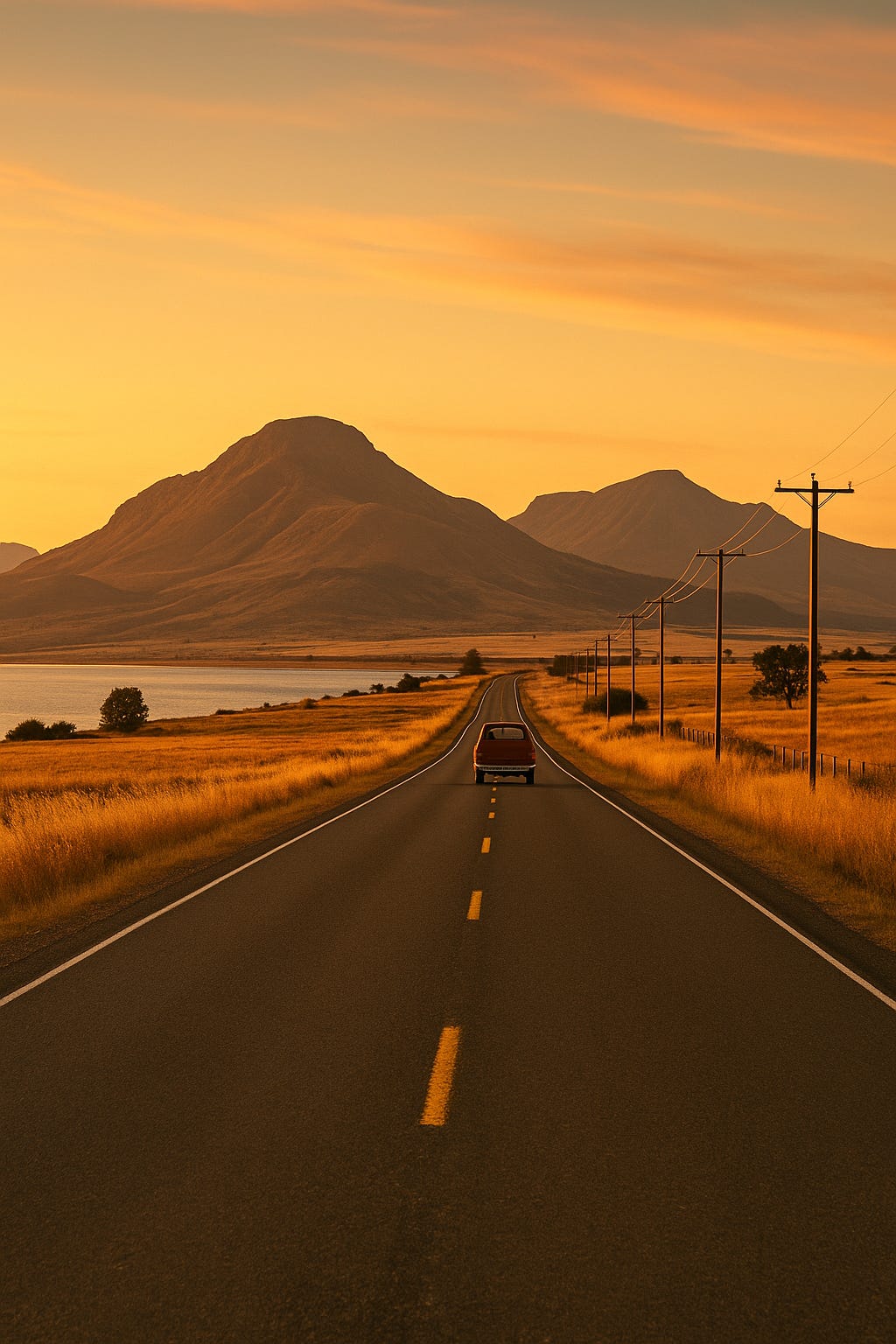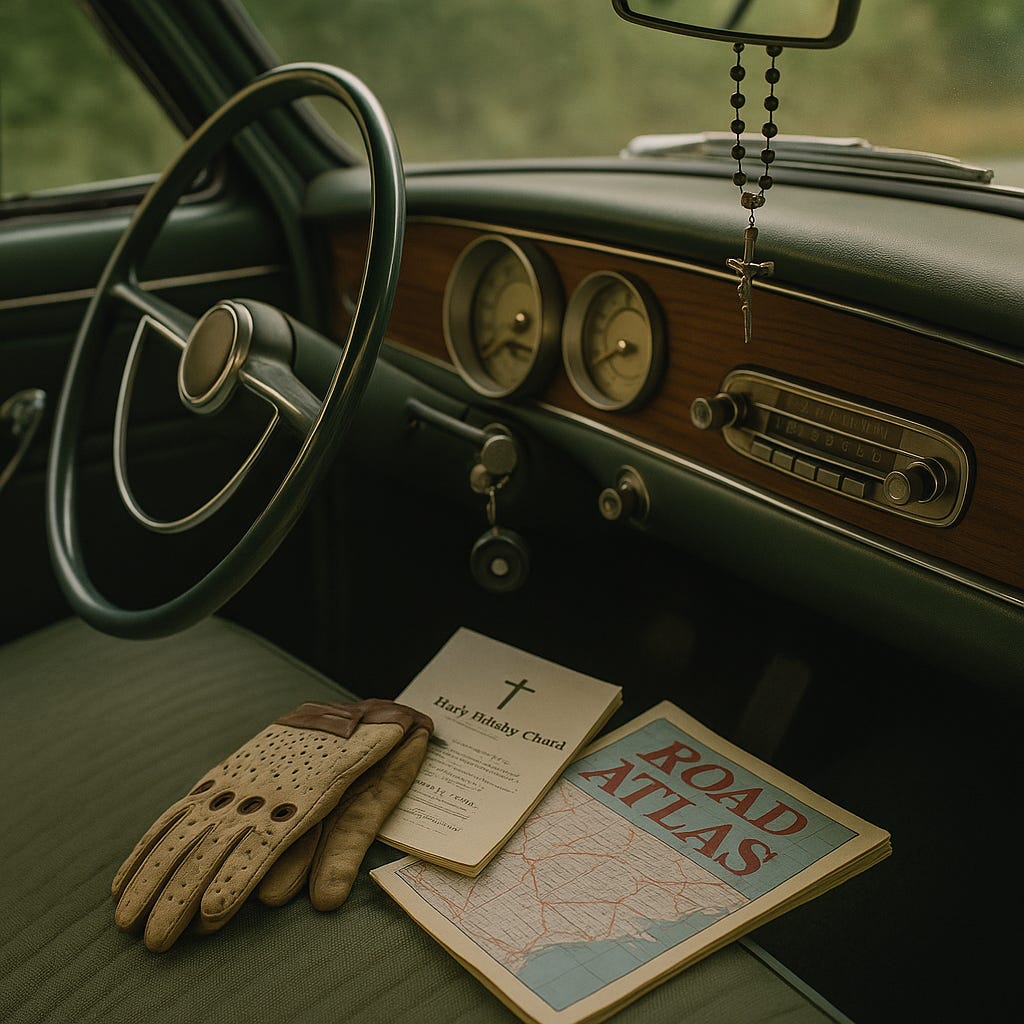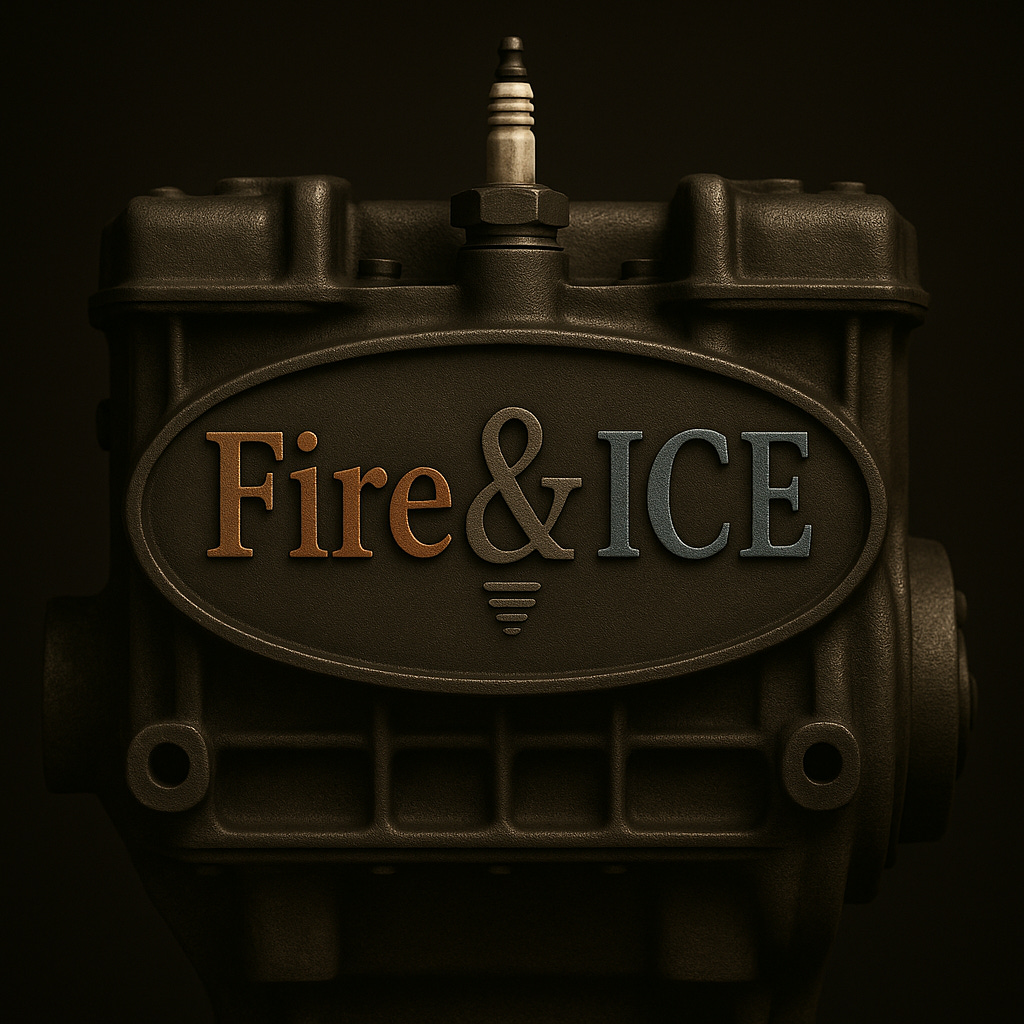Fire & ICE – Chapter One: The Sunday Drive
There was a time when a Sunday drive wasn’t about scenery — it was about possibility.
Before gasoline and cast-iron engines took the reins, travel was a chore measured in hoofbeats and hay bales. You didn’t just go to Grandma’s house for Sunday dinner. You planned for it. Feed for the horses, water in barrels, wheel grease, weather worries. A trip from St. Louis to Dallas wasn’t a journey — it was a campaign.
Then the internal combustion engine showed up, quiet at first, like all revolutions do.
One turn of a key replaced an hour of harnessing. A gallon of gas replaced a day’s worth of oats. The road didn’t change — but our relationship to it did. The family carriage didn’t need rest, shade, or grain. It only needed fuel, fire, compression, and the steady heartbeat of pistons doing their work out of sight.
And with that, America invented something simple, sacred, and wonderfully ordinary:
The Sunday Drive.
Mom in the passenger seat, Dad at the wheel, kids in the back arguing over who gets the window. Gravel crunching under tires. Dust lifting off old county roads. Radio tuned faintly to a ball game or sermon.
The promise wasn’t adventure — it was arrival. The engine meant you could leave after church and still make it to Grandma’s table before the gravy cooled.
No currying horses. No tightening harnesses. No stopping for pasture or water. Just motion — steady, warm, obedient — mile after mile.
That’s the quiet miracle of ICE: not horsepower, but time. It didn’t just shrink America; it delivered families to each other.
But behind every “turn key and go” moment was a silent chorus — steel forged in mills, oil pumped from the ground, rubber rolled into tires, towns with mechanics who knew the smell of burnt valves just by the wind. The supply chain wasn’t a corporate term back then. It was a neighbor who fixed radiators, a refinery worker who knew the difference between regular and high-test, a truck driver hauling fuel before dawn so strangers could chase the horizon by noon.
We didn’t talk about infrastructure, logistics, petroleum, metallurgy, timing belts, or compression ratios. We just turned the key — and trusted. Trusted the workers, the welders, the rig hands, the refinery operators, the long-haul drivers, and the mechanics. Trusted a machine made of fire and ice to carry us further than muscle and hay ever could.
And that trust created something no horse and buggy ever could: Spontaneity. Freedom. The ability to leave when you want and arrive when it matters.
Grandma’s roast beef never waited for a horse to catch its breath or an EV to power up. It waited for the sound of gravel popping under Goodyears in the driveway.
That’s the heart of Fire & ICE.
Not nostalgia — respect. Respect for the machine that made distance small, Sundays longer, and families closer.






